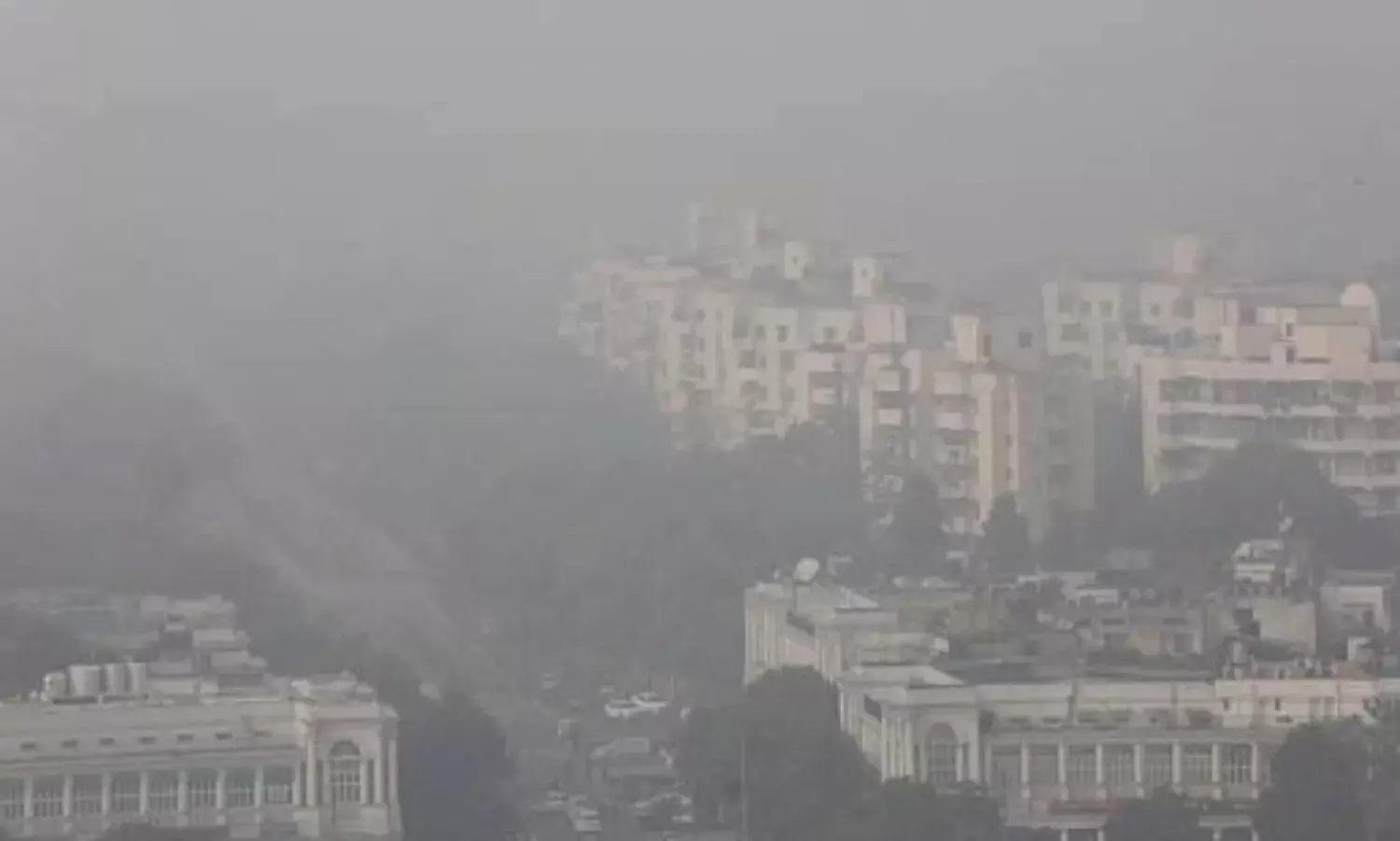Environment Minister Says 'Don't Panic', Air Pollution Isn't Emergency Like Bhopal Gas Tragedy
Environment Minister Says 'Don't Panic', Air Pollution Isn't Emergency Like Bhopal Gas Tragedy

NEW DELHI: In a classic case of political foot-in-the-mouth, environment minister and BJP politician Harsh Vardhan said that the toxic levels of pollution recorded New Delhi over the past few weeks shouldn’t be cause for panic. The minister went on to make a bizarrely misplaced analogy to the Bhopal Gas Tragedy, saying that the pollution levels were nowhere comparable to the 1984 disaster, as only the latter in Vardhan’s view qualified as a real “emergency.”
"I am talking in practical terms. You see, what happened in Bhopal when there was a gas leak and hundreds of thousands of people fell acutely sick and had to be rushed to hospital. We call that an emergency situation where you have to panic and you have to see what you have to do… I am not saying we shouldn't do anything about it (Delhi smog); everyone has to respond to what he is supposed to do. But there is no need to spread panic among the people,” the Minister reportedly said to News18.
Vardhan’s ministry had earlier issued a statement asking residents of New Delhi to “not panic.” “"The people of Delhi need not panic as several steps are being taken by the government to mitigate air pollution."
Delhi’s air pollution levels have made international headlines in the past weeks, as various parts of the city have recorded an Air Quality Index (AQI) maximum of 999. Most pollutants in air are micro particles, that can permeate the lungs and cause a host of health concerns. Tests by Greenpeace have shown these fine pollutants – called PM2.5 – can include carcinogenic chemicals such as lead, arsenic, cadmium and mercury. Levels of PM2.5 in Delhi on Tuesday reached 710 micrograms per cubic metre, more than 11 times the World Health Organisation’s safe limit.
Reports state that breathing New Delhi’s polluted air is akin to smoking a pack of cigarettes a day -- with the young and old most vulnerable to the air’s damaging effects.
The news has made international headlines, as Delhi’s air pollution has risen to more than 50 times London’s average. PM2.5 levels in New Delhi touched 710 on November 7. Delhi’s yearly average is 122, compared to Beijing’s 85, Paris’ 18, London’s 15, and Los Angeles’ 11.
While awareness of the problem has grown amongst Indians, with many taking to social media to demand action from authorities -- very little has been done to actually address the issue.
Politicians remain engaged in a political tit for tat, with each passing on the buck and the blame … crop burning in Punjab and Haryana, which contributes to the smog that settles over the region every year, continues as the government has failed to introduce cost effective alternatives. Every year in Punjab, about 7 to 8 million metric tonnes of paddy residue is burnt openly. Toxic chemicals are released in the atmosphere, and although farmers have been cautioned against this practice, they continue with it because it’s cost effective. Farmers have repeatedly blamed the state government for denying financial assistance that would enable them to get rid of paddy residue without resorting to burning. The state government has to provide Rs 200 per quintal to farmers as bonus or financial assistance which has been denied so far -- and crop burning continues.
The fact of the matter is, that unless incentivised to stop -- either through compensation or other measures, farmers will continue to burn stubble because it has no economic value to them, and collecting it in fact comes with a cost.
In Delhi, Chief Minister Arvind Kejriwal who has described the city as a “gas chamber” has failed to put in place a lasting solution. His government’s efforts to combat the problem through an odd-even scheme -- where cars with odd number plates and cars with even number plates ply on alternate days -- is a piecemeal solution, especially as it addresses only a small contributor to the pollution problem.
Of course, all these measures are important … but they have to be complemented by a concerted long-term strategy that aims to combat air pollution across parameters. Such a strategy is only possible if our politicians stop trivialising the issue. Judging by the environment minister’s recent remark -- asking people to “not panic” and then drawing an entirely misplaced analogy with the Bhopal Gas Tragedy that occurred several decades ago and had entirely unrelated causes -- is indication that that remains a tall ask.



